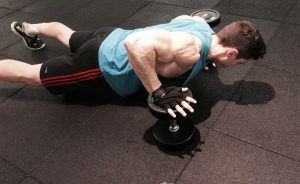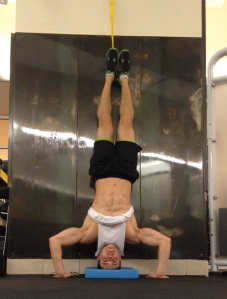I have been weightlifting for about 4 years now, but I have been active my entire life. I have been to numerous types of exercise classes, I’ve tried different workout regimes, and I’ve even made up my own. Through trial and error and seeing which plans make me feel the best and also show results, I have put together the 4 attributes that I think every workout should have. I like to call these traits the 4 S’s.
The 4 S’s are Stretch, Stamina, Stability, and Strength.
1. Stretch – It is important to start and end with a good stretch during your workout. Yes, stretching can sometimes feel tedious and annoying, but there are so many benefits to stretching that should not be over looked. Stretching not only improves your flexibility and mobility, but it can greatly reduce your risk of injury, and also even support faster and stronger muscle growth. When stretching you are getting more oxygen and blood flow to your muscles, therefore providing your muscles with more nutrients to repair and grow.
2. Stamina – It’s time to get your heart rate up. Cardio has endless amount of benefits no matter what your fitness level may be. Cardio burns calories for weight loss, strengthens your heart, helps reduce the risk of heart attack, high blood pressure, and high cholesterol, it helps you reduce stress, promotes sleep better, etc….
3. Stability – This is the one that I think many people forget to add into their workouts. Unless you are taking a Yoga or Pilates class, many workouts don’t incorporate stability into the regimen. Practicing your balance and stability will lead to fewer injuries, better posture, and improvement in your coordination and athletic skills.
4. Strength – This one is pretty self explanatory, but still can be forgotten, especially by people who are mostly just focusing on weight loss. It is very common to see people on the treadmill for an hour and then just leave the gym. Although they may be loosing weight, its usually is not in the areas they want to loose it in. I frequently get approached by people asking me how they get rid of their “belly fat” or “arm flab.” What I tell people who want to loose weight is that cardio and diet is obviously important, but strength training is your way of focusing on the exact body parts you want to improve on.
Examples of exercises for each aspect of the 4 S’s
Stretch – Arm Circles, Elbow Circles, Touch Your Toes, Lunges, Straddle, Splits
Stamina – Walking on an Incline, Running, Swimming, Stair Master, HIIT Workout
Stability – Planks, Holds, Handstands, Balance Drills, Yoga, Pilates
Strength – Weightlifting such as Bicep Curls, Tricep Extensions, Chest Press, Deadlifts, and Squats.
Try adding these aspects to your workout routines and let me know what you think. Contact me at corestrengthalec@gmail.com with questions, comments, or ideas for new topics.


















